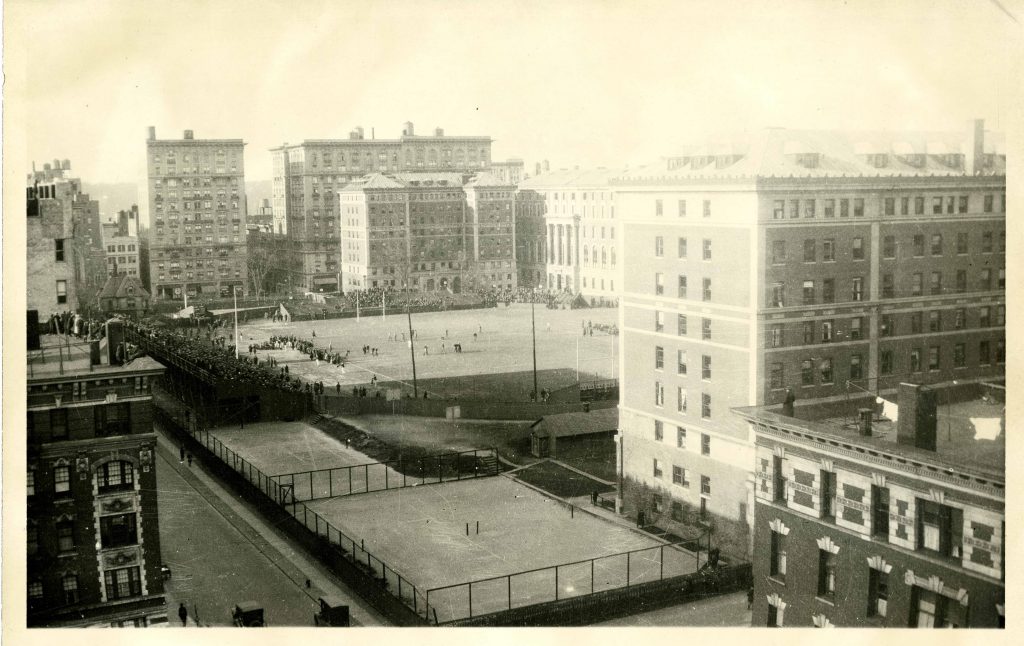From 1915 to 1922, Columbia football games were played on South Field right on the Morningside campus. A recently re-discovered photograph captures not only the old “stadium” with a game in progress (!), but even neighbors enjoying the game from the rooftops along 114th Street. Before John Jay Hall, Butler Library and Lerner Hall, you could see clearly from Amsterdam Avenue all the way to Broadway.
While searching in the stacks, we recently came across this amazing photograph of a long-lost view of campus at just the right time in Columbia history. Ann Putnam Browne took this photograph of a South Field football game in November 1922 from the solarium on top of the old Nurses’ Residence (Vanderbilt Pavilion) of St. Luke’s Hospital, on the east side Amsterdam Avenue at 114th Street.

- The fall 1922 season was the very last one Columbia played their home games in South Field. Baker Field became the home of Columbia football in the 1923 season.
- The varsity 1922 team was headed by team captain and All-American Walter Koppisch. He was ably aided in the backfield with a sophomore playing his first and only year on the team, Lou Gehrig. After his smashing debut season on the baseball team (spring 1923), he was signed by the New York Yankees.
- Who was Columbia playing? There were two games played on South Field that month: on November 11, Columbia defeated Middlebury 17-6, and, on November 27, Columbia lost to Colgate 59-6. There was a third “home” game against Dartmouth on November 18 but that was played at the Polo Grounds.
- In the center front, you can see tennis courts on the corner of Amsterdam at 114th Street. There was no John Jay Hall yet; that groundbreaking ceremony was held in March 1925.
- In the center back, Furnald Hall seems a little lonely behind the stadium. In 1917, because of the change in the enrollment numbers with the men fighting in WWI, the University converted Furnald into a women’s residence hall. After 5 years, in fall 1922, Furnald had just been “returned” to the College and was once again a men’s residence hall. Women students would have to wait until 1925 for the opening of Johnson Hall (now Wien Hall) to have their own dormitory again.
- What you can’t see: Butler Library construction started ten years later, in 1932, and that was many, many years before the construction of Carman Hall and even Ferris Booth Hall, which stood where Lerner Hall stands now.
We are very grateful to Miss Brown, who donated this print to Columbia in September 1952. It is part of the Historical Photograph Collection (Box 176 or Scan #4878). To learn more about the history of Columbia football, be sure to enjoy the Roar, Lion, Roar: A Celebration of Columbia Football online exhibition.